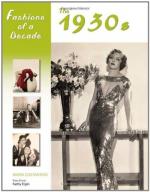|
This section contains 142 words (approx. 1 page at 300 words per page) |

|
In summer 1937, basking in what appeared to be the success of the New Deal, Roosevelt moved to cut government expenditures and raise interest rates, hoping to slow inflation and begin to withdraw the heavy hand of the government from the economy. Within weeks, however, the economy was in a tailspin, and by autumn 1937 the economy was back in the doldrums. Suddenly, four million workers were out of work, and economic indicators foretold a worsening future. The Roosevelt administration returned to its policy of massive government spending, and the Federal Reserve loosened its monetary policy. In spring 1938 Roosevelt called for an additional $5 billion in public expenditures. By late 1938, however, the New Deal was drawing to a close. Foreign policy was increasingly occupying the concerns of a nation not yet recovered from the traumas of economic depression.
|
This section contains 142 words (approx. 1 page at 300 words per page) |

|




